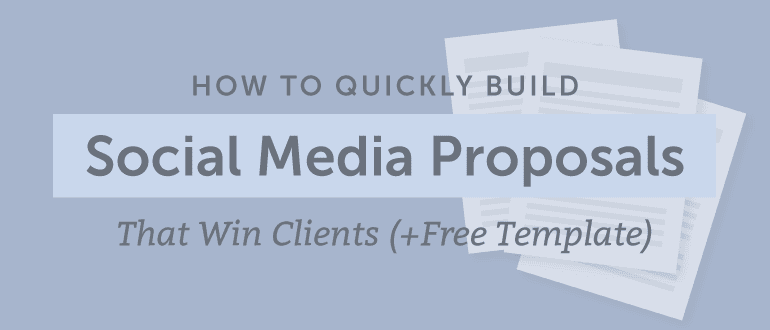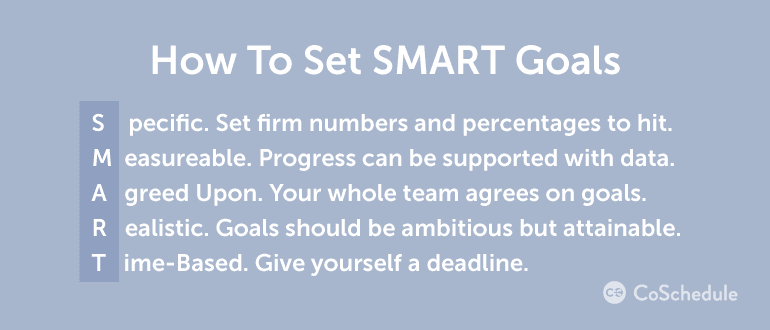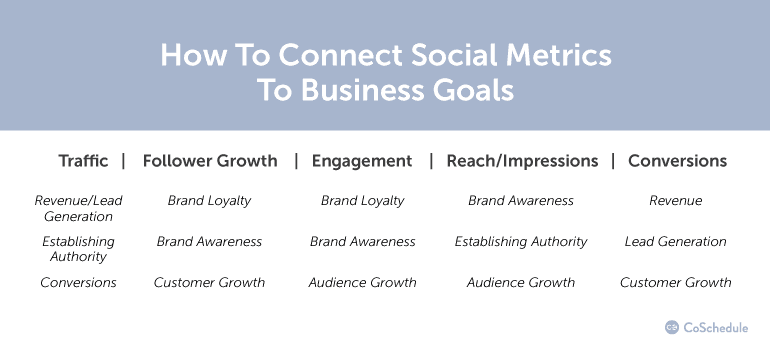How To Quickly Build Social Media Proposals That Win Clients (Free Template)
 Social media agencies, freelancers, and consultants need clients to survive.
It takes a steady influx of new customers to keep the lights on. That’s especially true if your clients tend to come and go on a project-by-project basis.
Landing clients isn’t easy, though. You have competition gunning for the same business. Your website is likely optimized to attract new leads, but that's only half the battle. Once you've met with a lead, you'll still need to convince them you're the best choice for their social media marketing budget.
Well-written social media proposals are key to closing deals. If you’re a writer or marketer, your sales team probably needs your help writing those proposals, too. If you’re working solo, you might need to show why you’re a better option than another freelancer or consultant.
Social media agencies, freelancers, and consultants need clients to survive.
It takes a steady influx of new customers to keep the lights on. That’s especially true if your clients tend to come and go on a project-by-project basis.
Landing clients isn’t easy, though. You have competition gunning for the same business. Your website is likely optimized to attract new leads, but that's only half the battle. Once you've met with a lead, you'll still need to convince them you're the best choice for their social media marketing budget.
Well-written social media proposals are key to closing deals. If you’re a writer or marketer, your sales team probably needs your help writing those proposals, too. If you’re working solo, you might need to show why you’re a better option than another freelancer or consultant.
Why Would You Need To Build A Social Media Proposal?
Clients want to know what you can do for them before they hand over their credit cards. They might hear about you first through your website, at a conference, or by word of mouth. Once you’ve hooked their interest and started discussing your future working together, they’ll need a tangible agreement in writing. Your stakeholders want to know exactly what you’ll do, and they’ll want something they can show their boss to show you’re worth the money. This is where strong proposals become invaluable. They’re a key tool for showing why you’re the best choice.How To Quickly Build Social Media Proposals That Win Clients (Free Template)
Click To TweetDrive Better Results For Your Clients: Become Social Media Strategy Certified
Shameless plug: we’re pretty excited about our newly updated Social Media Strategy Certification. It is the perfect course for users of social media who are feeling stuck or like they are wasting resources using social media. Learn the crucial social media skills to build a successful and effective social media strategy. Looking for more details? Check ‘em out here.What Do Successful Social Media Proposals Need To Include?
Your proposal needs to show your prospect how you can benefit their business. It’s not personal, but they don’t care about you. They care about what you can do for them. Keep your client front and center while covering each of the following:- What are you going to do. You know you’re not just going to post pretty pictures on Facebook. Make sure your client knows that too.
- How are you going to do it? Which tactics and methodologies will you use to achieve
- Who’s going to do the work? Which of your team members will be working on the account?
- Why does this all benefit your client, anyway? How is their business going to be transformed as a result of working with you?
- How much is this is all going to cost? If you’re good, your services probably don’t come cheap. Show why you’re worth it, and clients will be much more willing to sign.
How To Build An Awesome Social Media Proposal Step-By-Step
Next, let’s look at how to build a proposal. This should take a little bit of time to complete. You want the document you deliver to be detailed, polished, and well-planned.Start By Establishing Goals, Metrics, And Objectives
Your prospective client wants to know how your work will benefit their business. Logically, it makes sense to start with goals. These will be the endpoints you work toward.Use the SMART Methodology
You may have heard us mention SMART goals on the CoSchedule blog (or elsewhere). If you’re unfamiliar, that’s okay. The SMART methodology provides a simple framework for effective goal setting.
Set Business Goals For Your Client
Next, outline tangible business goals. This could include:- Generating leads
- Raising brand awareness and cultivate brand loyalty
- Increasing sales and revenue
Determine Metrics You’ll Monitor
In order to reach your goals, you’ll need to determine which metrics matter. Applying the right data will help you know if you’re succeeding, and prove it to your client. Traffic: How much traffic are you sending to your website? This is often key for driving leads. Follower Growth: The more followers, the better. However, it’s important to make sure you’re attracting the right followers (meaning, followers who fit the client’s desired, target audience). Engagement: You don’t want to bore your audience. If people like your social media content, they’ll interact with it. Reach: Sometimes, just getting your message in front of people is enough to influence positive business outcomes. This measures how many people see a post, even if they don’t engage with it. Conversions: Driving conversions from organic social media isn’t always easy. “Isn’t always easy” doesn’t mean “isn’t possible” though, and it may well be important to your client that you know how to turn social media into a revenue or lead generating machine.
Be Intentional About Channel Selection
While we’re discussing social media proposals, we need to be clear that the spectrum of social media is broad. Depending on your potential client, some channels may make sense more than others. Be sure to tailor your proposal to networks that:- Your client is already on.
- Your client wants to build a presence on.
- Platforms you feel your client should be on, but may not have thought of.
Be intentional about selecting social media channels for clients.
Click To TweetIntroduce Your Team Members
The most reliable clients don’t just pay for projects. They invest in relationships with your team. They’ll want to know who they’re working with, and what those people are going to be doing. Help them put names to faces in your proposal. Include the following information.Identify Roles
What capabilities do you have on your team? Show your prospect that you have the skill sets required to do what they’re asking from you. Here are some common roles:- Writers. Your literary ninjas crafting compelling copy that entertains and motivates audiences.
- Designers. Visual content geniuses that will make your client’s social channels look their best.
- Strategists. Big picture thinkers that connect the dots between tactics, strategies, and objectives.
- Analysts. Data wizards that tell you what’s working, why it’s working, and how it’s working.
- Project managers. Professional cat herders that keep the rest of your team in line and on time.
- Account managers. Your face to your client. This person is your prospect’s first point of contact for anything they need.
Introduce Team Members
Knowing a little bit about your team (beyond the work they’ll be doing) can help humanize your agency. Add screenshots and quick bios outlining their interests and passions. Include details about their skill sets.What Services Will You Provide?
Anyone can talk about how they’ll “transform your business” while dropping three-letter acronyms like “ROI” and "CPC" and whatever else. Actually showing your prospect what you’ll do is more difficult. This is where you need to demonstrate exactly what kinds of skills you’ve got, and what kind of results you can expect to produce. Think “less talk, more rock.”Writing a proposal? Think 'less talk, more rock.'
Click To Tweet
How Your Team Will Do It
You don’t have to give away all your secrets. However, a client will want to know how you’re going to deliver on your promises. Consider including some of the following items in your proposal:- A description of your processes and methodologies. What’s unique about the way you work that helps you deliver better results than your competition?
- What tools do you use? Using the same tools can be helpful for collaborating with clients.
- A clear explanation for the specific work you’ll perform.
- Specific tactics and techniques you’ll use.
Why You’ll Do This Work
What’s the reason you’re going to do all this work, anyway? Be sure you know what your client’s objectives are. Some possible objectives could include:- Increasing brand awareness
- Community building and engagement
- Driving leads
Set Clear Schedules And Timelines
You don’t want to leave your client wondering what you’re doing while burning their budget. Let them know when things will be done up front. This includes:- Deadlines for projects.
- Timelines for meetings and check-ins.
- Time frames to reach performance goals.
Tips For Setting Deadlines
Your client needs to know when to expect work to be completed. It helps with their own planning and makes their life easier. Keep these pointers in mind:- Be realistic. Don’t over-promise how fast you can get work done. Be up front about how much time it’s going to take to do a good job.
- Hold yourself accountable. Once you set a deadline, consider it set in stone. Do whatever you have to in order to meet it. If you were realistic about setting your timeline, you shouldn’t need to pull any all-nighters.
- Make sure deadlines are agreed upon. This ensures a client can’t try to force your hand to deliver faster than promised.
 Be firm on your timelines and work hard to meet them. Under-promise and over-deliver.
Be firm on your timelines and work hard to meet them. Under-promise and over-deliver.
When it comes to deadlines, under-promise and over-deliver.
Click To TweetBe Clear About Budgets
Going over-budget is stressful for agencies and consultants. It leads to costly write-offs or over-billing your client (and you should never over-bill anyone, for anything, ever). Neither is good for either side. The best way to avoid problems here is to establish realistic budgets.Tips For Setting Budgets
- Every team member you add to a project raises the cost. Include only those who are essential.
- Be smart when planning meetings. They can be a drain on both time and budget if you’re billing for hours spent in meetings, in addition to time spent doing the work.
- If you’ve selected the right people, to perform the right work, on the right timeline, then budgets should (hopefully) fall in line too. If your client disagrees, then negotiate, or even walk away. You need to arrive at terms that are satisfactory to both sides.

Determine Reporting Periods And Deliverables
As you work with your client, they’ll expect to see some kind of reporting. This could mean a formal weekly or monthly reporting document showing how your work is performing. Your proposal should note:- When to expect reports.
- What those reports will look like (PowerPoint, Excel, PDF, etc.).
- What data will be reported on. These should be tied back to your goals and metrics.
Looking for MORE Ways To Win Clients Using Social Media?
Enroll in Actionable Marketing Institutes Certification course on Social Media Strategy. Learn the crucial social media marketing skills to drive better results for your clients. Topics Covered Includes…- Setting goals for social media campaigns
- Measuring performance using analytics
- Creating high-quality, engaging content
- Optimizing messages for specific channels & audiences
- And more!
Win more clients with this free social media proposal template.
Click To Tweet

